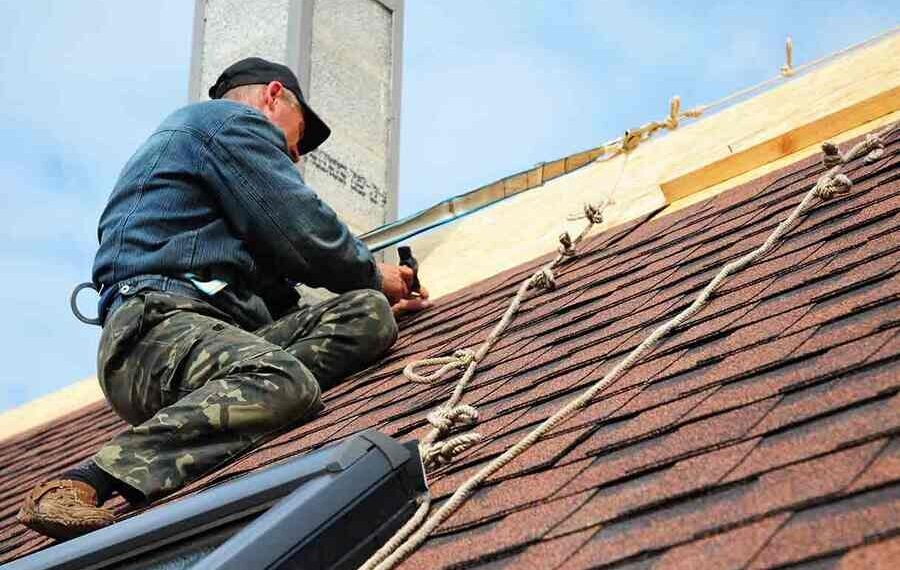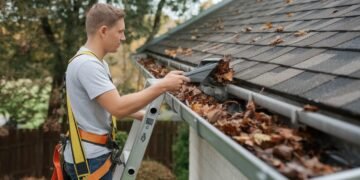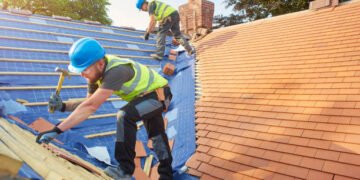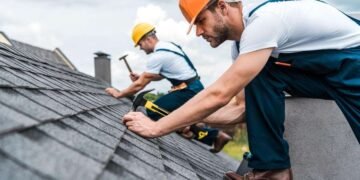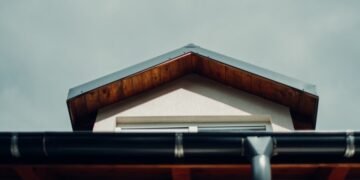In construction and home maintenance, the importance of a sturdy, visually appealing, and durable roof cannot be overstated. It not only plays a critical role in safeguarding your home’s structural integrity against the elements but also significantly contributes to its overall aesthetic appeal.
In this article, we’ll go through the intricacies of roofing solutions, shedding light on the materials, technologies, and craftsmanship that go into creating roofs that stand the test of time while enhancing the beauty and value of your home.
Understanding the Basics of Roofing
Before diving into the world of roofing solutions, it is crucial to have a basic understanding of the different types of roofs commonly found in residential properties. The most common ones include:
- Shingle Roofs: These are among the most popular choices due to their affordability and durability. They come in various materials, such as asphalt, wood, metal, and slate.
- Tile Roofs: Made from materials such as clay or concrete, tile roofs are known for their longevity and resistance to fire, rot, and insects.
- Metal Roofs: As the name suggests, these are made from metal sheets or tiles and are gaining popularity due to their durability, energy efficiency, and low maintenance.
- Flat Roofs: These are typically seen on commercial buildings and used in modern residential properties. They have a low slope and require special materials such as rubber, PVC, or TPO for proper waterproofing.
The Importance of Quality Materials
When it comes to roofing solutions, the quality of materials used is crucial. A roof made from subpar materials may save you money in the short term, but it will likely lead to costly repairs and replacements in the long run.
High-quality materials not only ensure durability and longevity but also play a significant role in enhancing your home’s energy efficiency. For instance, metal roofs can help reduce cooling costs by reflecting heat from the sun, while proper insulation materials can keep your home warm during colder months.
Innovative Technologies for Superior Roofing Solutions
Advancements in technology have revolutionized the roofing industry, making it possible to create superior solutions that were once unimaginable. Some of these technologies include:
- Drones: These are used for roof inspections, saving time and labor costs while providing accurate and detailed reports.
- Augmented Reality (AR): AR visualizes potential roofing designs, giving homeowners a better understanding of how their chosen materials and styles would look before the installation.
- Solar Shingles: These shingles harness solar energy to power your home while acting as protective roofing material. They are an excellent option for environmentally conscious homeowners looking to reduce their carbon footprint.
The Impact of Skilled Craftsmanship
While advanced technologies and high-quality materials are critical for quality roofing solutions, skilled craftsmanship is equally important. A well-installed roof can significantly extend its lifespan and enhance its performance, protecting your home from the harsh elements.
Choosing a reputable roofing company with experienced, trained, and certified professionals ensures that your roof will be installed with precision and attention to detail. This not only guarantees optimal functionality but also adds to the overall aesthetic appeal of your home.
Additional Factors to Consider
- Location and Climate: The geographical location and the climate of the area play a crucial role in deciding the type of roofing material and design. Areas prone to heavy snowfall may benefit from sloped roofs that facilitate easy snow removal, while regions with high wind speeds might require roofing systems to withstand such conditions. Understanding the local weather patterns helps select a roof that can endure environmental challenges.
- Architectural Style: The architectural design of your home influences the roofing choice. A roof should complement the overall style and aesthetics of the house. For example, traditional homes may look best with tile or slate roofs, while modern homes could be better suited to metal roofs or flat designs. Matching the roof to your home’s architectural style enhances curb appeal and property value.
- Energy Efficiency: The energy efficiency of roofing materials affects not only your carbon footprint but also your utility bills. Materials that offer better insulation or have reflective properties to ward off the sun’s heat can significantly reduce heating and cooling costs. Considering energy-efficient options like cool roofs or installing additional insulation under traditional roofing materials can be beneficial.
- Maintenance Requirements: Different roofing materials and designs require varying levels of maintenance. Understanding the long-term maintenance needs and associated costs can influence your choice. Low-maintenance options like metal roofing might be preferable for those seeking minimal upkeep. In contrast, wood shingles may require more frequent treatment or replacement but offer a distinct aesthetic appeal. A trusted roofing company can help with maintenance and care, so check the local contractors in your area.
- Budget: The cost of roofing materials and installation varies widely. Setting a realistic budget and understanding the long-term return on investment is essential. While some materials may have a higher upfront cost, their durability, energy savings, and potential to increase home value could make them more cost-effective in the long run. Balancing initial investment with long-term benefits and maintenance costs is key to making an informed decision.
- Sustainability: Environmental considerations are increasingly becoming a priority for homeowners. Selecting sustainable roofing materials, such as recycled metal roofs or solar shingles, reduces your home’s environmental impact. Additionally, considering the recyclability and life cycle of the roofing material can further enhance the eco-friendliness of your choice.
Conclusion
In summary, choosing the right roofing solution involves considering a variety of factors such as materials, technology, craftsmanship, location and climate, architectural style, energy efficiency, budget, and sustainability.
By understanding these considerations and working with a reputable roofing company that offers high-quality materials and skilled installation services, you can ensure a durable and efficient roof that adds value to your home.
Stay informed and make the best decision for your unique needs to enjoy a reliable, functional, and visually appealing roof for years to come.

